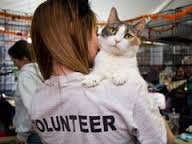The Big Cat Is Back
Tippi Hedren
 Actress and Animal Activist Tippi Hedren (The Birds - Shambala Big Cats Preserve) returns to Animal Radio to talk about life living with Lions, Tigers and Ligers, oh my. She rescues tigers that were purchased as pets and out-grew their homes. She's also forged legislation that outlaws exotic animals as pets. Animal Radio will hook you up with her new autobiography, Tippi.
Actress and Animal Activist Tippi Hedren (The Birds - Shambala Big Cats Preserve) returns to Animal Radio to talk about life living with Lions, Tigers and Ligers, oh my. She rescues tigers that were purchased as pets and out-grew their homes. She's also forged legislation that outlaws exotic animals as pets. Animal Radio will hook you up with her new autobiography, Tippi.
Tippi Hedren is finally setting the record straight in her highly anticipated memoirs, TIPPI. Not only does Tippi spill the beans on her relationship with Alfred Hitchcock and how she got the role in the move Birds, but how her bit cats preserve Shambala was started.
Director Alfred Hitchcock originally discovered Tippi's talent, but the generous benefactor would become a repulsive and controlling director who contractually controlled her every move for many years. Tippi talks about the dark pain she endured working with him on their most famous collaborations, The Birds and Marnie, and how as a single mother she shielded her daughter from her struggles on and off Hitchcock's set. Tippi explains that her parents taught her to be a smart girl, so she never let herself get in too deep and that her relationship with Alfred Hitchcock never got too terrifying or too awful.
Difficult as her experiences with Hitchcock were, they nearly paled in comparison to her time on the set of Roar, a film starring dozens of live lions and tigers, which has become one of the most notorious film productions of all time.
Tippi explains that they were originally going to use Hollywood-acting animals, but when the trainers of those big cats read the script, they said they didn't have enough animals to do the movie and told her to get her own. So that is what she did. At one point they had over 70 animals that they had acquired to do the movie. This included lions, tigers, mountain lions and leopards. Surprisingly, all of these animals were rescues.
The production of Roar became a big endeavor for Tippi. Their planned 9-month shoot actually took five years to complete. She states it became much more than a movie, it became an "issue." She wanted to know why all of these animals were being born in the United States to become somebody's pet? Turns out that selling these animals was a huge business. Thankfully this business is not as big as it was, as people are becoming wiser about having these dangerous animals as pets.
Melanie, Tippi's daughter, was also involved with the film, and grew up with these animals. Tippi explains it was dangerous, but that they learned very quickly that they are not pets and it is not smart to be involved with them.
 Shambala, Tippi's big cat preserve, was started because of this and she vehemently states that she does not advocate the purchase of these animals to become pets. These animals can grow up to 500 pounds. Even the most docile pet can inflict serious harm and even death on a human in an instant. They even had some close calls on the set of Roar.
Shambala, Tippi's big cat preserve, was started because of this and she vehemently states that she does not advocate the purchase of these animals to become pets. These animals can grow up to 500 pounds. Even the most docile pet can inflict serious harm and even death on a human in an instant. They even had some close calls on the set of Roar.
All of the animals at Shambala are all behind fences and no one goes in with them or has hands on with them. While Tippi had around 100 animals at the time of shooting the movie, currently there are about 40 of these animals living at Shambala, which is funded by donations. Tippi lives on the preserve and people always ask her if she misses living in the city. She says no, she's got this magnificent place and can look out at lions and tigers and can hear them roar and talk to each other and it's the most beautiful place in the world.
Tippi has worked on legislation making it illegal to have these animals and while she has been successful, she has also received threats on her life. This is because there is big money involved with selling these animals and people don't want to stop.
Tippi has had an unusual life and enjoyed writing her book. She hopes the readers will enjoy reading it as much as she's enjoyed (or been scared too death) living it. She states she's taken every advantage of every door that opened for her, as well as opening some herself. She even considered calling her book, "The Open Door,' as we've all had doors that were opened to us. She says that you may open a door and look through it and say, "Oh, that looks interesting." Or, you open a door and say, "Uh-oh, not going through that one. If you're smart!" She says maybe one day she will write that book!
Tippi has had an incredible life and she says if she were to do it over she would probably do it the same way!
Filled with sixteen pages of beautiful photos, Tippi is a rare and fascinating look at a private woman's remarkable life no fan can miss.
Visit Website
How to NOT Train a Dog - Dr. Debbie
 The other day I was walking my dog in a community area and encountered a lady with two Shih Tzus. As we approached, her dogs rallied with barking and tugging on their leashes. I asked if her dogs were friendly, so as to decide if we could approach. The lady scowled, embraced her still barking dogs and grumbled, "Do they look like they're friendly?"
The other day I was walking my dog in a community area and encountered a lady with two Shih Tzus. As we approached, her dogs rallied with barking and tugging on their leashes. I asked if her dogs were friendly, so as to decide if we could approach. The lady scowled, embraced her still barking dogs and grumbled, "Do they look like they're friendly?"
Realizing this dog owner was more unsociable than her dogs, I decided to vamoose, but not before I envisioned this blog topic - how pet owners mold unsocial dog behavior.
Unwanted doggie behavior such as lunging and barking on the leash become established when the dog owner hasn't made it clear what the appropriate behavior is, fails to correct and redirect to a more suitable behavior, or simply reinforces the undesirable behavior through actions or words. Face it - there aren't bad dogs, just poorly trained ones.
Avoid making these top 5 training mistakes:
1. Secluding Your Dog in the Backyard
Keeping your dog in lock down almost guarantees problem behaviors will develop such as biting, inter-dog aggression and phobias to anything from noises to car travel. Isolated dogs lack the experience and confidence when faced with novel situations while socialized dogs adapt easily.
I see it all the time - the dog owner prides herself in keeping her dog safe. "I didn't want Fido to catch any diseases as a pup, so I didn't let him out of our backyard till he was a year old." The overwhelming fear of infectious diseases like parvovirus causes some well-meaning owners to confine their new dog or puppy to the limits of house and yard. Even more extreme is never allowing a puppy to step foot outside until after their last puppy vaccinations! Puppies are most adaptable to new experiences between 6 and 16 weeks - this is the time to expose them to unfamiliar places, people and animals.
That doesn't mean you should take your eight week old puppy to dog parks, but rather to use good sense selecting low dog traffic areas and visiting with family and friends outside of the home that have properly vaccinated pets.
2. Skipping Obedience Training
Going to school is a must for any new dog to a home, whether a puppy or adult. No two dogs are the same, and each learns differently. Formal obedience training is a useful tool to gently reaffirm who's in charge and sets the rules in the house. Statistics show that dogs that go through formal obedience training are less apt to develop behavior problems and be relinquished to shelters.
 3. Reinforcing Fear at the Veterinary Office
3. Reinforcing Fear at the Veterinary Office
In the exam room I cringe when I see a dog owner comforting a nervous, fearful or aggressive pet. That "good boy" and pat on the head reinforces your dog's behavior, making it more likely that on the next hospital visits he'll behave the same, or worse. Some problem behaviors escalate making it difficult for the veterinary staff to examine or treat the animal. This may mean additional costs for sedation or anesthesia for routine medical needs.
It's natural for a pet owner to want to reassure a pet when he is frightened and it can be difficult to hold back the urge to soothe him. However, the best strategy is to ignore those fearful behaviors in the vet office. Don't be tempted to kiss, snuggle or hold Fido on your lap when he is misbehaving. Rather, place the dog on the floor, refocus your dog's attention to you, and cue him to "sit" or "lie down."
4. Not Using Food as a Reward
Food shouldn't just be for the taking. Don't leave food out for your dog to graze whenever he wants and don't give treats just for the sake of giving a treat. Present food and treats as a reward for good behavior such as sitting quietly, going to a pillow, or performing a trick or obedience work. This places you at the top of the household hierarchy. You become the provider of great edibles in the house, and your dog will be motivated to listen to your requests in other situations.
We all love to spoil our dogs and give treats at times. But be sure to give treats for a reason, or you will have a spoiled doggie brat on your hands.
5. Not Exercising Your Pet Enough
Inadequate exercise can result in obesity and boredom, and may lead to problem behaviors like separation anxiety, destructive chewing and excessive barking. Dogs should get 30 to 60 minutes of sustained physical activity each day for optimum mental and physical benefit. And no - letting Buffy run around the backyard during the day is not adequate exercise.
Not all breeds are cut out for all exercise - a Labrador may enjoy retrieving games or swimming, a Jack Russell terrier may thrive with jogging or Frisbee, while a Basset hound will be satisfied with a leash walk.
Your dog can't be a well-adjusted, socialized canine citizen without you, as the pet owner, taking an active role in training. Put the time in, and you'll be thanked many times over with an outgoing, friendly canine pal that can accompany you on life's adventures.
Featured veterinarian known as "Dr. Debbie" on national pet radio program, Animal Radio. Ebook author of "Yorkshire Terriers: How to Be Your Dog's Best Friend"; "Pugs: How to Be Your Dog's Best Friend"; "Mini Schnauzers: How to Be Your Dog's Best Friend"; and "Shih Tzu: How to Be Your Dog's Best Friend." Dr. Debbie's books.
Visit Website
5 Ways To Give Back To The Pet World
Robert Semrow, Listomania
 For many the holidays are traditions. For some it's about food and still others it's about family. In these busy times, it's important to remember that the season is really about giving. This season I thought I'd share five ways that you can give back to the pet world.
For many the holidays are traditions. For some it's about food and still others it's about family. In these busy times, it's important to remember that the season is really about giving. This season I thought I'd share five ways that you can give back to the pet world.
My first way is one that may seem obvious. Scrooge's, here's a perfect way to avoid 3 ghosts visiting you on Christmas Eve and a way to make a huge difference. That's right - cash or a gift card. A cash donation, especially to a local organization that operates on small budget, makes a huge difference. It gives them much-needed funds and flexibility to continue their efforts.
Cash certainly isn't the only thing that makes a difference, especially at this time of year. One of the best things that you give at this, or anytime of the year, is your time. Like all organizations, rescue groups find themselves short-handed at this time of year because of holiday travel, events and commitments. Volunteering your time helps fill in holes that are desperately needed and greatly appreciated. From walking and playing with pets, to cleaning cages, to office assistance or just spending time with the animals to help with socialization skills, helps. Every minute you spend volunteering can have a profound effect for the rescue group.
Wish list items. Every organization out there has a wish list of much needed and appreciated items that help care for the pets. From toys to treats to reams of paper and office equipment, the lists are usually posted on their website and easy to find and these days easy to fill. You can place an order at your favorite online shopping site and have it delivered to them.
 Donate your company's expertise. Whether it's construction skills, photography skills, accounting skills or any other business, it's likely to be something that can help the group out. Even something as simple as sharing their story and efforts with your customers can make a huge difference and create connections that lead to lives changed and lives saved.
Donate your company's expertise. Whether it's construction skills, photography skills, accounting skills or any other business, it's likely to be something that can help the group out. Even something as simple as sharing their story and efforts with your customers can make a huge difference and create connections that lead to lives changed and lives saved.
Become an Evangelist for a cause or group. That's right, you can be a loud voice for those without a voice or the time to express their voice. All of these groups need help with their efforts on social media, regular media and local events. It is overwhelming to try to find the time to promote, share and reach people on all of these different media platforms. You can do this quickly and with a little extra effort, you can really help them get their messaging and stories out to a wider audience than they may have time or expertise to do themselves.
One bonus way I want to share with everyone is to consider "fostering a pet for the holidays." Many organizations have a unique program that specifically places pets in homes during the holiday season. This gives the pets a warm home, even if it's just for the holidays. It's a great way for the pets to socialize and work on their interaction skills as well.
There are many more wonderful ways to give back to the pet world. As you're checking your list twice, make sure you add a "Gift to Local Rescue" to that list. You will give them something they need and you'll likely receive much more back.
Share your holiday pet rescue giving suggestions on our Animal Radio Facebook Page.
Visit Website
The Dogfather's Grooming Tip with Joey Villani
 How To Make Your Dog Look Younger
How To Make Your Dog Look Younger
Surprisingly Joey is frequently asked how people can make their dogs look younger by grooming them. People want to look younger so it is natural for them to want their pets to look younger too.
If you want to make your pet looks younger, you need to go to a professional groomer, but you can direct them to what you want done with your pet.
For example, if you have a dog that needs to get regular haircuts, just by keeping their hair on the shorter side, will naturally keep the younger puppy look.
Joey gives an example of people. Think of some recording artists that got older and had long hair when they were young but by keeping the long hair as they got older, it made them look a lot older. However, when one of them cut their long hair, people would comment on how it took 10 years off of them. Basically it's the same for your dog. Keep it short and it will make the dog look younger.
Another thing you can do is dyeing your dog's coat. Joey has dyed muzzles on dogs as well as complete coats. If your dog is starting to grey, there is no reason you can't dye them back to their natural color. Men do it so why not do it to our pets if it makes you happier.
There is a special pet-friendly hair color that professional groomers use on dogs. However, the human product, Just For Men, has been used on dogs' muzzles for years.
Animal Radio News - Lori Brooks
 Rising Pet Health Care Costs
Rising Pet Health Care Costs
There's a report out that says pet owners may shell out as much, or more, money for their pets' health care as they do for their own health care. It's mostly because of pricey new technologies and more advanced treatment options. The report from Healthy Paws Pet Insurance, which sells medical coverage for dogs and cats, crunched the numbers from 215,000 claims submitted by their customers during a one-year period. The most common accidents and illnesses for dogs include stomach issues, often from ingesting human foods like chocolate and other sweets. Other big problems for dogs include skin conditions, ear and eye infections, growths and their removal, chronic allergies and pain. As the report shows, stomach and skin issues also affect cats, as do urinary tract infections, cancer, kidney disease, eye and ear conditions and heart and respiratory problems. The report found that stomach ailments in pets could cost more than $6,000 to diagnose and treat, while growths and lumps can cost upwards of $15,000 because they may involve cancer. Heart surgeries can run as high as $20,000 and monthly medication bills can add up to more than $100. The most expensive insurance claim Healthy Paws has seen for a dog involved a 3-year-old female French Bulldog diagnosed with intervertebral disc disease with a final bill of $44,296. The highest claim for a cat topped $14,000. The 10-year-old male cat was diagnosed with liver cancer, which required a biopsy and surgery. But, less life-threatening conditions can be expensive too, with ear infections costing up to $250 a visit.
 Military Pets Dubbed "Pests"
Military Pets Dubbed "Pests"
There are thousands of American soldiers serving in the Middle East and many of them find stray cats and dogs that become their pets. They create bonds while the soldiers all chip in to care for the adopted pets. Now the pets hanging around military bases in the Middle East have been dubbed "pests" by the local authorities who are trapping them with plans of exterminating them according to the group Guardians of Rescue. The soldiers, wanting to save their beloved pets, have reached out to Guardians of Rescue and the organization has started collecting donations for their mission to rescue five pets of soldiers who will be picked up in the Middle East and flown back here in the states where the 2 cats, 1 kitten and 2 dogs will be waiting for their military pet parents when they return from duty.
Signs of Holiday Stress in Dogs
The holidays can be stressful for everyone, both humans and our pets. While some dogs enjoy the increase in activity and new experiences that come with holidays, there are lots of others who are not fans of change and all the chaos that can come with it. That's why it is important to be able to recognize signs of stress in your pet, so you can remove them from dangerous situations and help them relax. Dogs have their own ways of letting you know, "I am freaking out." So, Camp Bow Wow has a list of some signs of stress in dogs: Lip Licking and Yawning - Both are indicators of stress. If a dog is being hugged, tugged on, etc., and begins lip licking and yawning these are warning signs, which are a clear indicator that he/she is now anxious. Wide eyes and showing the whites of the eye both indicate that a dog is stressed out and often dogs with this expression avoid your gaze as well. Raised hackles - For a dog, this is an involuntary response to his environment and can mean the dog is nervous and anxious. Stiff Wagging Tail - A dog that is experiencing stress (and may bite) will wag its tail in a stiff manner. Look out for a tail that is pointed high and moves quickly back and forth. Cowering or Tail Tucking -This behavior indicates that a dog is fearful. Pacing and inability to settle down - A dog that is stressed may also pace around an area and not be able to relax into one spot. How to Comfort Dogs Showing Signs of Stress: Provide a safe space - You can set up a crate, a separate room, bed, or other escape where the dog can lie down and not be bothered. It's important to ensure those around the pet to leave it alone when it goes to its safe space. Remove your pet from stressful situations - If a pet is stressed in a particular setting, the best thing you can do is to remove it from the situation entirely. Exercise the dog before a gathering or chaotic times like opening gifts with children. Try a calming aid - There are also calming aids available like slow-paced classical music, natural calming sprays, thundershirts and pet rescue remedies that could help take the edge off your pet.
 Parrot Is Only Witness in Murder Case
Parrot Is Only Witness in Murder Case
Court proceedings were held in Michigan for a woman accused of murdering her husband and their parrot is the only apparent witness. The couple's pet, an African Gray parrot, apparently witnessed the shooting and began repeating words from the victim just moments before his death. The parrot has been recorded as saying, "Don't (blanking) shoot" then the bird mimic words of an argument between a male and female. The prosecutor in the case has said if needed, he would use the parrot as a witness in the case against the woman.
 Listen to the entire Podcast of this show (#1097)
Listen to the entire Podcast of this show (#1097)





